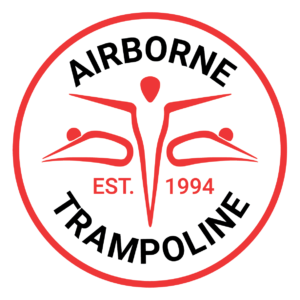Foam Rolling & Trampolining
“Soft Myofascial Release” is not a very self-explanatory name. But fear not, it’s simply a fancy term for self massage to aid in muscle tightness and/or trigger points. So let’s introduce you to the more common term known as “foam rolling” and how to use it in a huge variety of sports including trampolining to aid in recovery after an intense workout and training sessions. Here are 5 great foam rolling techniques that specialize in the muscle groups particularly sore in the sport of trampolining. All of which you can try out for yourself in the comfort of your own home, or at your local gym.
Upper Back (Thoracic Spine)

Jumping on a trampoline for long periods can be strenuous on the entire back, particularly in people with poor posture. The upper back can become fatigued by the repetitive bouncing motion resulting in the shoulders being pulled forward rather than in their natural spinal cord alignment therefore straining the back muscles which try to compensate. Strong jumpers can avoid this by building up strength and maintaining strong posture during long training sessions. Even then, foam rolling can help alleviate any lingering discomfort caused by sore muscles.
Start: Lay back against the wide face of a foam roller. Position it underneath your shoulder blades in a comfortable balanced position. Bend your knees, place your feet flat on the floor and place your hands behind your head, or cross your arms over your chest and slowly elevate your butt.
Roll: As always, keep your abs and core muscles tight. Begin by slowly rolling forward and back so that the roller moves up and down between the middle of your back and the top of your shoulder blades. Be sure not to look at your legs as you roll as you do not want to place stress on your spine.
Duration: Continue foam rolling in this manner for 20-30 seconds before relaxing.
Quadriceps (Quads)

The legs are obviously the most important body part while trampolining. While the entire muscle group in your legs are working in unison while jumping, some muscles are worked more than others. The quads are a great example of this.
Start: Position the roller under your thighs and lay facing down. Plant your elbows and fore arms down on the floor to balance and support your upper body. Your feet should now be hovering over the ground and not being used to support your body. Remember body weight is key to providing the pressure necessary to massage deep into the muscle tissue.
Roll: As always, keep all core muscles tight. Using your forearms for momentum, begin rolling forward and back allowing the foam roller to travel between your hip joint and just above your knee.
If you really want to get a good amount of pressure on your Quads, cross one leg over the other and roll one leg at a time.
Duration: Continue rolling for 30-60 seconds, or 20-30 seconds per individual leg.
Glutes

Clench, release, clench, release etc..etc.. I’m sure many of you have never really though about it while jumping. But imagine that is what your glutes are repeating for extended periods of time. Eventually they get tired and sore.
Start: Basically, sit on the floor with your legs extended and raise your butt in the air using your arms as support. Place the broad side of a foam roller under your butt and cross one leg over the other so that only one glute takes the full weight of your body at any time.
Roll: Roll your glute back and forth over the roller (it will be a very limited range of motion). Continue this way for a set amount of time and then switch to the other side and repeat.
Duration: Roll each glute for roughly 20-40 seconds each.
Hamstrings

The final piece of the muscle groups in the upper leg. While the whole leg contributes to the upward springing force required in trampolining, the hamstring definitely plays its part.
Start: Similarly to the glutes stretch, sit on the floor with your legs extended and your palms on the ground. Lift your butt in the air and place the broad side of the foam roller under the back of your legs. Your feet and butt should be off the ground, while your upper body is supported by your arms.
Roll: using your arms, the goal is to begin a forward and backward motion resulting in the foam roller rolling across the back of your legs between your glutes and just above your knees.
Duration: Roll along your legs for 30-60 seconds.
Calves

Last but not least we have the calves. The muscles that give you that extra boost when propelling off the trampoline. Prone to cramps and soreness, don’t forget these little friends.
Start: While sitting, place the foam roller underneath your calves with your hands flat on the floor. Raise your butt in the air resulting in all your body weight being distributed between your hands and your calves.
Roll: As always, slowly roll forward and back covering the entire length of your calf muscle. For an added kick, cross one leg over the other resulting in all of the weight being on one calf at a time.
Duration: Roll for 20-40 seconds, or 10-30 seconds per calf.
These are excellent foam rolling techniques to benefit your recovery after a long session on the trampolines. But don’t stop there, there are plenty of other foam rolling techniques for every body part imaginable. All it takes is a little research and a foam roller and you will be bouncing back in no time (pun intended ;).
Until next time! #GetAirborne!


